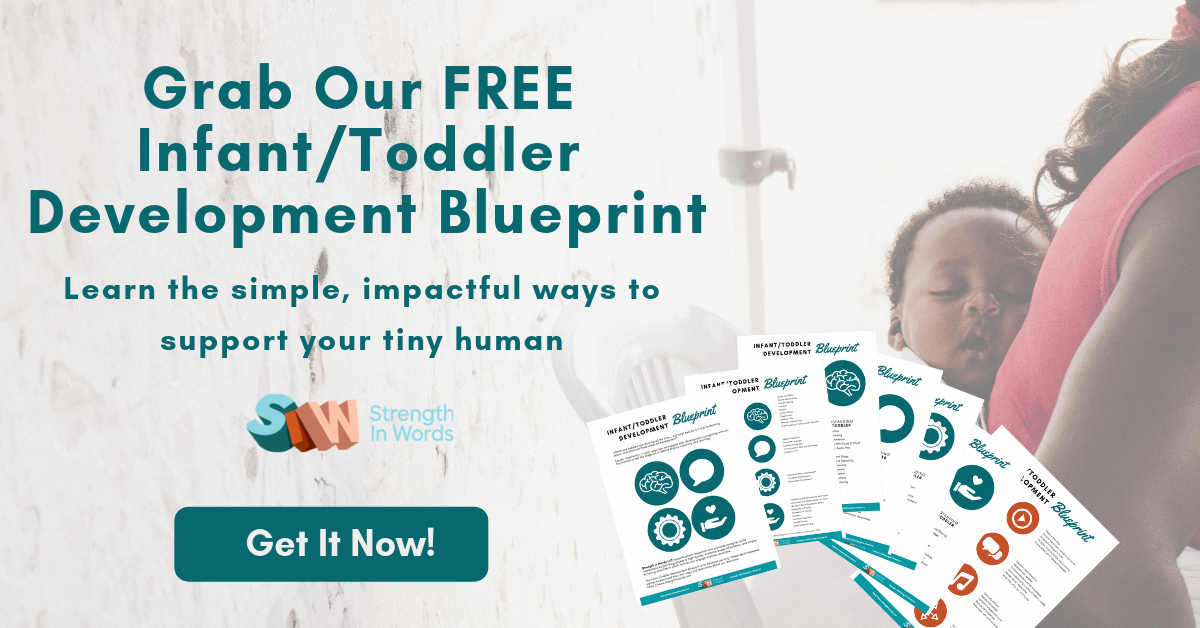“My son has a good life. He wants for nothing, he knows I’m here for him. Sometimes I think his late start to communication has to do with the fact that he has it TOO easy.
So when his speech-therapist suggested a technique he referred to as ‘sabotage,’ I thought, well – it sounds a little strange, but we’ll give it a try. “
As a mother who is also a pediatric speech-language pathologist, I have a few tricks up my sleeve when it comes to getting my little one to communicate. One of the strategies I use is a little trick with a not-so-friendly name: sabotage.
It’s up to you as the adult to keep the kindness alive when implementing this strategy, as we spoke more about in my corresponding podcast episode, The Art of Sabotage. So how does the word “sabotage” fit into child’s play?
Essentially, it’s about creating situations that you know have the strong possibility of tempting your child… and then obstructing their ability to freely get to that item or complete a process.
You’re engineering a “problem-solving” situation, and to solve the problem, your child must communicate with you in some way (to get your help, to tell you something’s missing, to get your attention…)

So, how does one create this sort of “communication temptation?”
One simple idea is to enclose some of your little one’s favorite play materials (or place them just out of reach) so that she must “ask” you for help.
More ideas can be heard on the corresponding podcast episode, The Art of Sabotage.
Now, let’s keep our expectations reasonable – for example, if your child is not yet pointing, we’re NOT going to withhold his toys until he points to what he wants.
We’re not cruel.
BUT, if you know he is able to use the pointing gesture (you’ve seen him do it in the past) and you want to create more opportunities for him to do it, this might be a good way to create an opportunity for that!
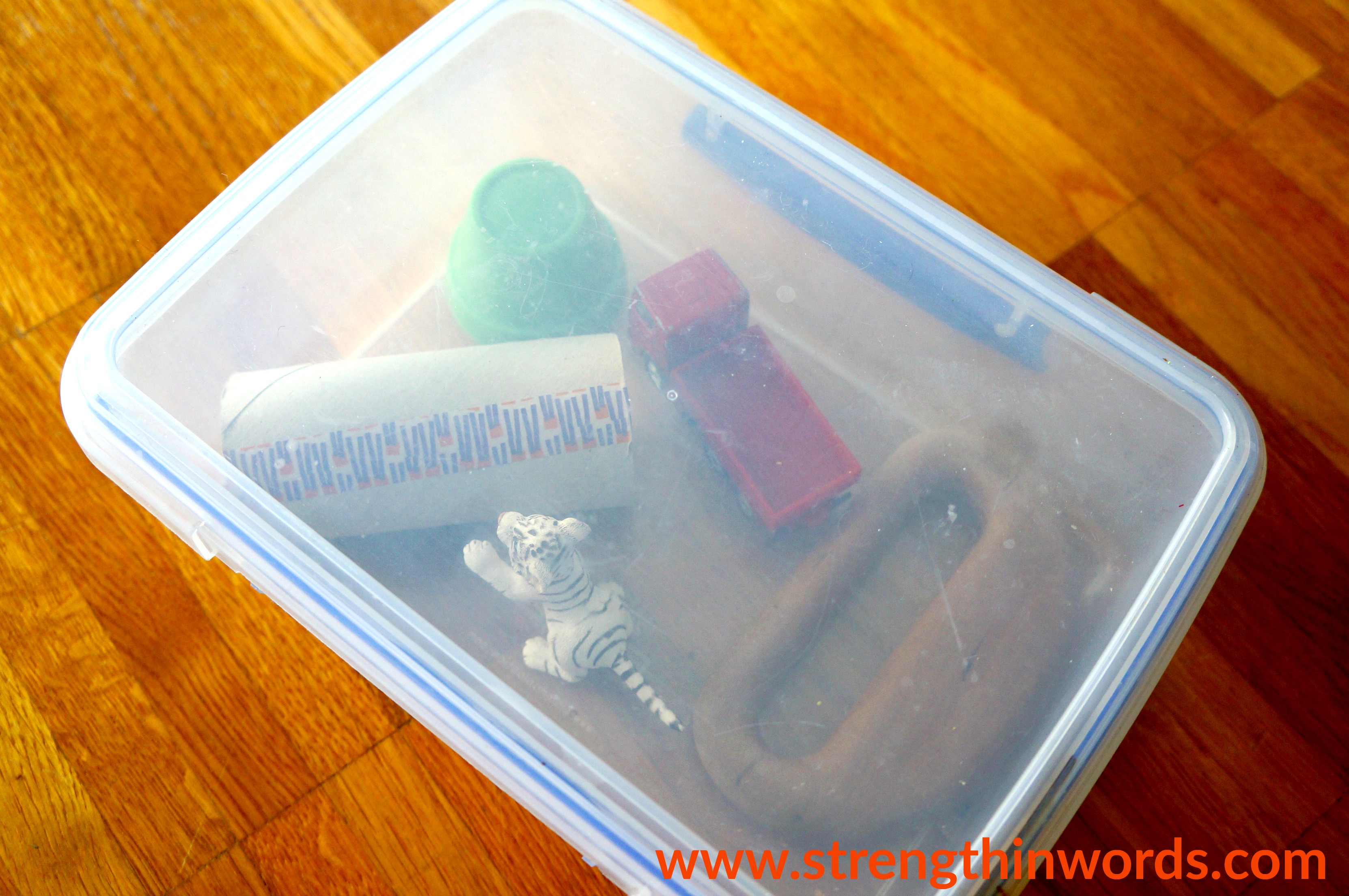
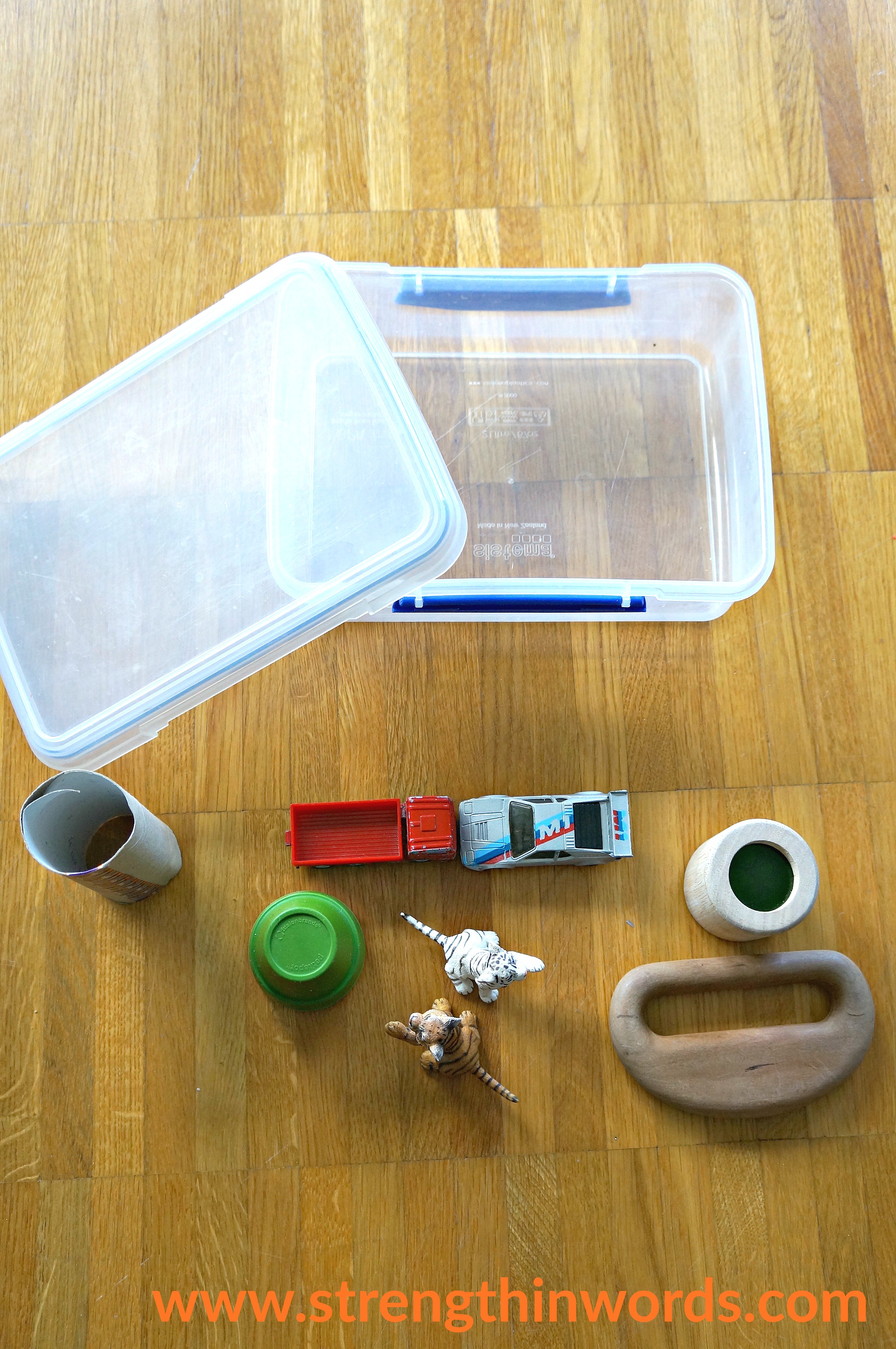
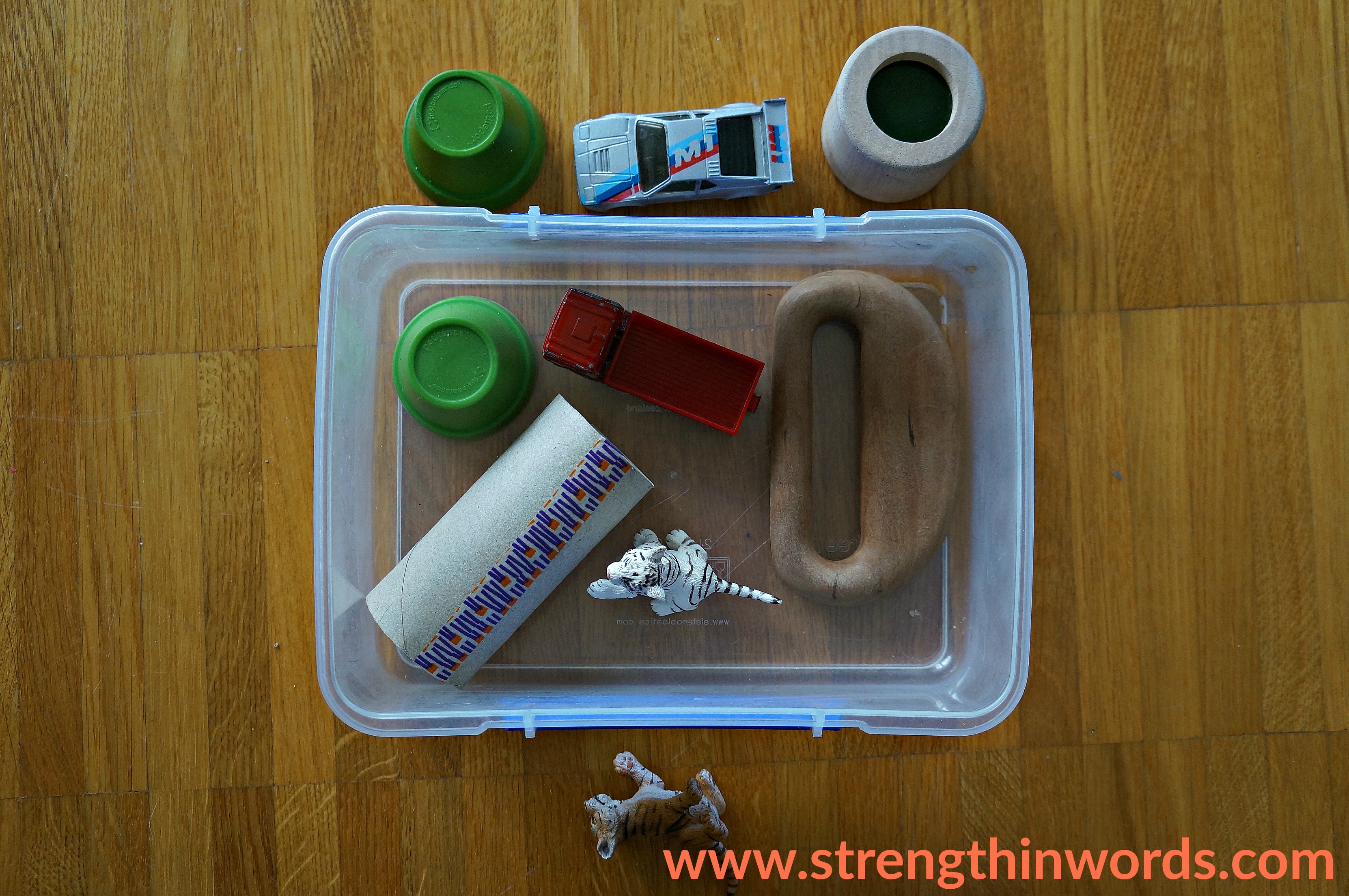
Don't Miss our Corresponding Podcast Episode!
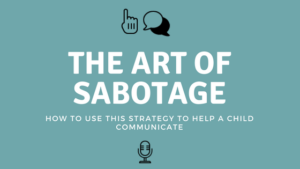
Materials to create your DIY box of communication temptations:
- A clear plastic storage container – make sure that it cannot be opened independently by your little one!
- 2-4 of your little one’s preferred toys or play materials (for instance, a rattle/shaker, a ball, vehicle, doll, plastic animal, small container, paper roll) – and, if you can, another similar item so you can each play with one once your child has successfully “communicated”
Instructions to create your DIY box of communication temptations:
- Collect the items and place them inside the container, ensuring it is sealed.
- Place the container at your child’s level (this sometimes works best if you can “seamlessly” put the box in your little one’s view – making it appear that you aren’t even aware that you have created a little trap. Tiny people catch on to being manipulated!)
- Wait for your baby to somehow get your attention, and let you know she needs help.
- Expect the highest form of communication that your child is already able to do – again, this is not the time to hold out until your little one performs a new task.
- If your baby’s attempt is clear (i.e., she points and forms the sound “o” for “open,” but you really want her to say the word), I’d encourage you to give your child a verbal model by saying something like, “it looks like you want me to ‘open’ that… but I’m not sure” – sometimes this helps a young child coordinate the movements and thought process necessary to perform a more difficult task.
- Play dumb!
- If your baby touches the box (but you’re waiting for her to also make eye contact with you), you might say, “oh look, there’s a box!”
- If your baby touches the side of the box (but you know she is able to point), you might say, “maybe you want something in there! I wonder which one?”
- If your baby bangs on the box (but you know she can sign the word, “open”), you might bang on the box, too, pretending it’s a drumming activity she wants.
- If your baby vocalizes (but you know she can make an approximation of the word, “open” – for instance /opa/), you might say, “you’re trying to tell me something with your voice!”
- Incorporate music! I find that music often helps to lighten the mood and make things more fun. For a simple way to do this within your play, have a listen to the corresponding podcast episode, The Art of Sabotage!
Ages
- Sometime in the second half of the first year (between 6 – 12 months), babies often start to exhibit “joint attention” abilities, meaning that when engaged with you, her focus is not only on the object in front of you, but also on you. She recognizes that you’re both engaged in that object or activity – by making eye contact with you, getting your attention with a touch, vocalizing or verbalizing, etc. The strategy known as “sabotage” is only truly effective with a child who is able to engage in joint attentional activities… if not, she’ll have no reason to know she’s supposed to “ask” you for something.
- Think about what your child has already done to communicate with you, and what you might expect from her next. Although the strategy of sabotage is not meant to be used to expect your child to perform a new skill or task, think about ways you can model the next skill level(s) up from what she’s currently doing. Keep your communication skills up!
- Make eye contact with your baby
- Point to things in your environment
- Label objects, but also talk about them in their context (what they’re used for, who uses them, when we use them, why, etc.)
This post contains affiliate links. All activities described by Learn With Less assume close and continuous supervision of the child by an adult.

